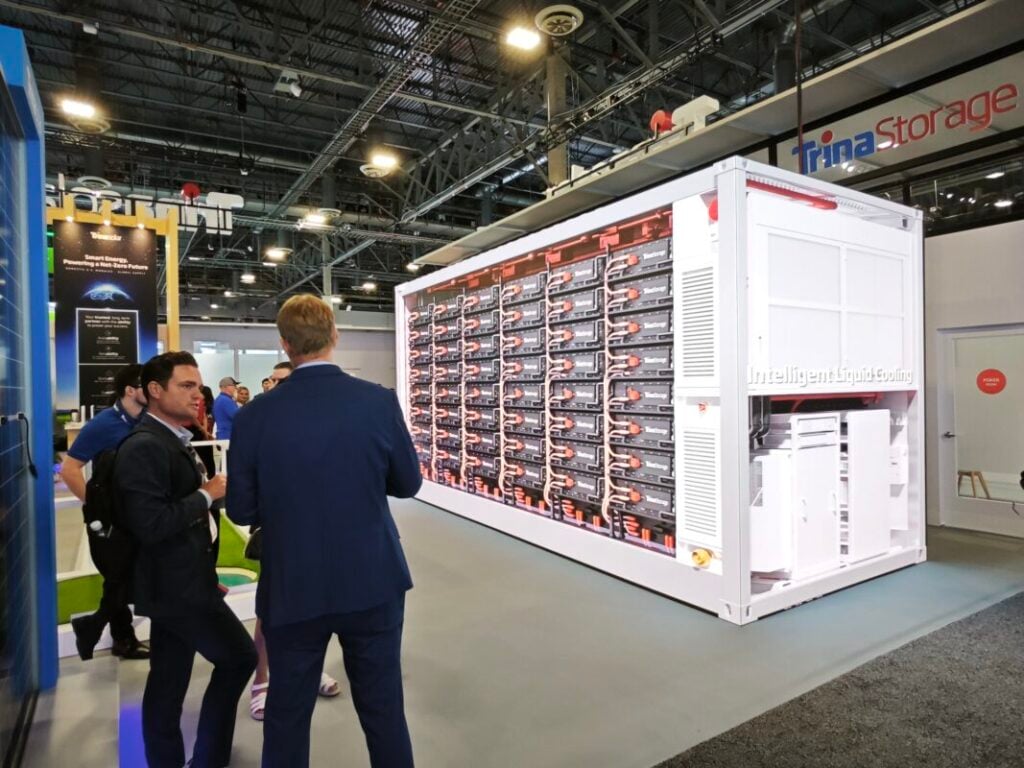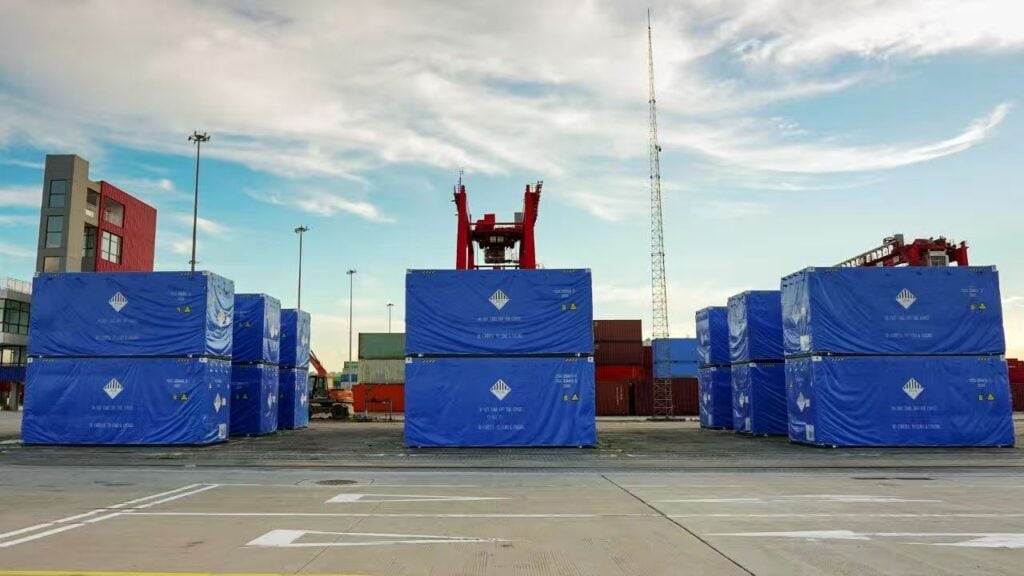
In the rapidly evolving US energy storage sector, companies must navigate a complex web of policy changes, supply chain challenges, and evolving customer needs.
During a recent interview at RE+ 2025, Terry Chen, Vice President of Trina Solar US, outlined how Trina Storage—the energy storage arm of solar PV manufacturing giant Trinasolar—is positioning itself for long-term success in North America despite these challenges.
Building on a Foundation of Experience
Trina Storage has significantly expanded its US presence over the past two years, developing a substantial local team and securing multiple large-scale projects. The company anticipates deploying approximately 10GWh of energy storage capacity in the US market over the next two to three years. It’s a testament to its growing footprint and customer confidence in its offerings. Shortly before the publication of this interview, Trina announced a new 1.08GWh BESS deal in the US market.
“We’ve grown a large team in the States. In the meantime, we’ve signed a couple of large projects we’re delivering, and we have a very strong pipeline,” Chen explains.
Try Premium for just $1
- Full premium access for the first month at only $1
- Converts to an annual rate after 30 days unless cancelled
- Cancel anytime during the trial period
Premium Benefits
- Expert industry analysis and interviews
- Digital access to PV Tech Power journal
- Exclusive event discounts
Or get the full Premium subscription right away
Or continue reading this article for free
This expansion builds on Trinasolar’s established track record in renewable energy manufacturing. The parent company has manufactured PV modules for over two decades, bringing valuable experience that now informs Trina Storage’s approach to supply chain diversification.
The T-Shaped Integration Strategy
Central to Trina Storage’s approach is what Chen describes as a “T-shaped vertical integration strategy,” which combines horizontal and vertical elements:
Horizontally, the company implements a “local-for-local” concept with teams based in the US market providing complete solutions from battery cells to fully integrated AC systems, along with comprehensive lifecycle services.
Vertically, Trina Storage leverages a robust supply chain strategy with flexible manufacturing options to mitigate tariff risks while maintaining quality control and technology leadership.
This approach allows the company to offer customers both supply chain resilience and local support—a combination particularly valuable in today’s uncertain policy environment.

Introducing Elementa 2 Pro: Practical Innovation
At RE+ this year, Trina Storage debuted its Elementa 2 Pro energy storage system for the US market. Rather than pursuing the trend among some competitors for maximum container-level energy density, Trina has focused on site-level economics and practical considerations.
The new system offers enhanced energy density and improved cycle life (from 10,000 to 12,000 cycles at the cell level) while maintaining a standard 20-foot container format optimised for US transportation infrastructure.
“We’re not chasing energy density at the container level, we’re always looking at the site level,” Chen explained. “When you scale up anything over 5MWh, you may have a lot of challenges from transportation today… the transportation cost can be triple, or even more.”
This pragmatic approach extends to the company’s product development philosophy. Chen noted that Trina prefers a “streamlined roadmap” with step-by-step improvements that allow customers to build on existing operational data rather than requiring them to revise their assumptions with each product generation.
Market Diversification and Beyond-Subsidy Thinking
The US energy storage market continues to diversify, with applications now spanning areas including:
- Traditional PV-plus-storage systems
- Standalone energy storage facilities
- Emerging hyperscaler data centre backup solutions
Perhaps most interestingly, Chen observed a growing interest in business models that don’t rely on the investment tax credit (ITC): “A lot of investors and developers started looking at a financial model without 30-40% ITC. That’s a market value-driven, very open-minded approach.”
This shift toward subsidy-independent thinking is supported by rising electricity prices and the emergence of less cost-sensitive applications like data centre backup, where reliability often outweighs pure cost considerations.
Looking Forward with Measured Optimism
While acknowledging that US technology adoption typically lags behind global markets by about six to 12 months due to supply chain constraints and policy dynamics, Trina Storage remains committed to its core value proposition as “the most bankable and cost-competitive AC solution provider.”
The company’s focus on pre-integration to reduce installation time and overall project costs, combined with its flexible supply chain strategy, positions it to weather current uncertainties while maintaining a long-term presence in the North American market.
As interest rates potentially decrease and electricity prices continue to rise, the fundamental economics of energy storage may improve even without federal incentives, creating new opportunities for companies with the patience and resources to navigate today’s complex landscape.
